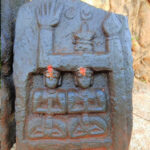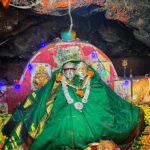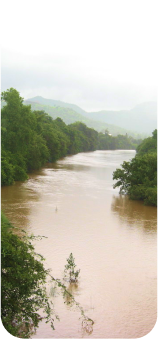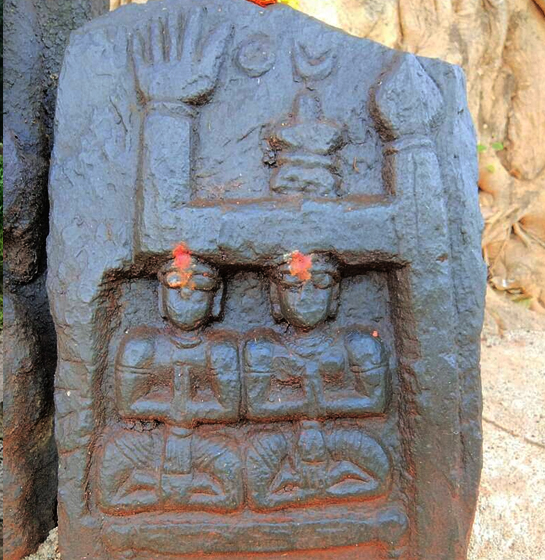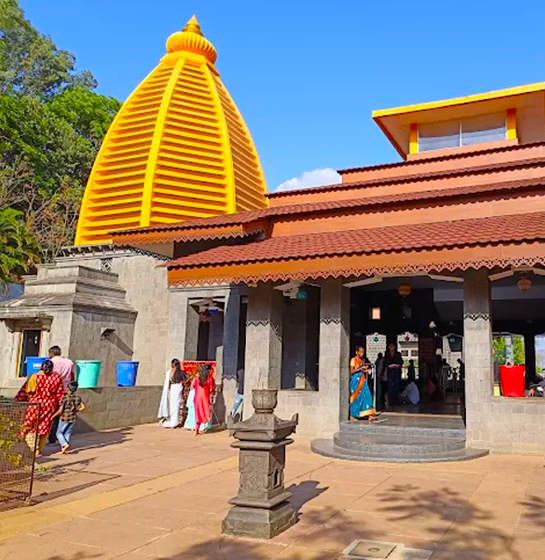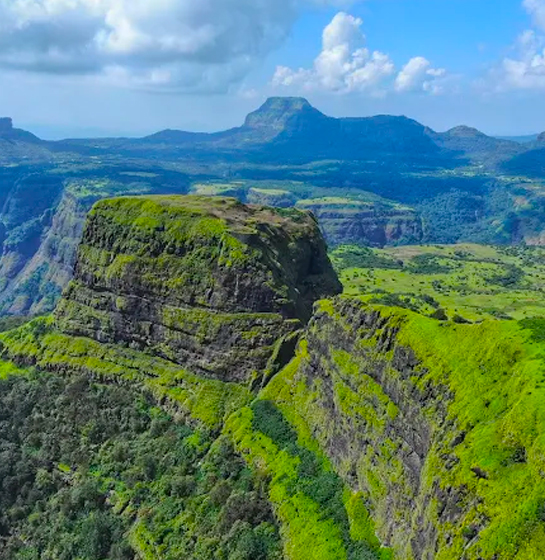Arhatic Yoga Ashram
Mulshi – An Uninterrupted Source of Spiritual Power
Arhatic Yoga Ashram – Mulshi
In the eighth century, there was a kingdom named Oddiyana located in the western part of India. This Oddiyana kingdom is now the Swat region in modern-day Pakistan. The king of this region at the time, Indrabhuti, was unable to have children. Despite trying various treatments and religious rituals, he remained childless. As a last resort, King Indrabhuti decided to embark on a great sea voyage. He traveled throughout India and even to the lands of Siam and Kambuj by sea. On his return journey, he found a child inside a lotus flower. The king brought the child back to his kingdom, formally adopted him, and declared him the crown prince.
Because he was found in a lotus flower, the child became known as Padmasambhava.
Padmasambhava, even at a young age, gained remarkable expertise in spirituality and tantra. He renounced everything, leaving behind all material pleasures, and pursued the path of detachment.
Due to his progress in tantra, his name became famous worldwide. Even after mastering all Vedic practices and gaining authority over them, Acharya Padmasambhava’s desire for knowledge kept growing. Padmasambhava, who mastered all known Indian traditions and attained their respective deities, was an extraordinary Indian sage.
Unfortunately, not much is known about his life and work in India.
After taking initiation into the Buddhist tradition, he notably laid the foundation of Buddhism in Tibet and established the first Buddhist monastery there. It is well-documented that he was the first Buddhist guru in Tibet. You can find more information about Padmasambhava by researching further.
Samson Chao Chui, born in 1952 in China, was a follower of the Catholic faith. From a young age, he showed extraordinary skill in spirituality, spiritual healing, and yoga. He conducted 30 years of research and developed a new spiritual path, which he called Pranic Healing. In Marathi, Pranic Healing can be translated as “Pranopachar” (a term I coined from my limited understanding).
He also secured the global intellectual property rights and ownership of Pranic Healing. Over time, he changed his name to Choa Kok Sui, which means “Joy of the World” in Chinese. He also received the titles of Master and Grandmaster. Grandmaster Choa Kok Sui often stated that he was a disciple of Acharya Padmasambhava.
As he developed Pranic Healing, he also created a new system of yoga called Arhatic Yoga. One branch of this system is a center for advanced Arhatic Yoga training, located in Mulshi taluka. When you travel from Male, Mulshi, towards Kolad via the Kolad Highway, you will find a left turn towards Lonavala after crossing Nivegaon. After turning left, about 2 km further, there is the Arhatic Yoga Ashram, established by Grandmaster Choa Kok Sui, which has been operational for two decades. Advanced techniques in Pranic Healing and Arhatic Yoga are taught here. Ordinary individuals do not easily gain entry to this ashram. After completing some Pranic Healing courses in Pune and Mumbai, the final two courses are taught at the ashram in Pimpri, Mulshi. Grandmaster Choa Kok Sui attained Mahasamadhi in 2007.
Mulshi – An Uninterrupted Source of Spiritual Power
Ananda Sangha – Watunde, Mulshi
[Photo: First photo shows Paramahansa Yogananda, and the second shows Swami Kriyananda]
Greetings, friends. In this section, we are going to explore a unique side of Mulshi. Pune, a sacred land, has attracted great souls for thousands of years. Sant Dnyaneshwar Maharaj, the crown jewel of saints and yogis, hailed from this very sacred land. This Pune, sanctified by the feet of many saints and holy men, also shaped the great warrior Shivaji Maharaj. Pune holds an eternal place in Maharashtra’s political, literary, and spiritual history.
In the western part of Pune, in the Maval region filled with hills and valleys, the present-day Mulshi taluka continues to attract various talented individuals. In all directions of Mulshi taluka, there is at least one center dedicated to spiritual power. In this section, we will delve into the various spiritual sources of Mulshi taluka.
During pre-independence India, a great personality was born. Though he excelled in school and college, he found no interest in it. The Himalayas always called to him. Even as a schoolboy, he ran away from home to meditate in the mountain caves of the Himalayas, seeking the answer to the question, “Who am I?” In later years, after finding a true spiritual master, he revived the ancient practice of Sahaja Yoga in India. Blessed by a long lineage of masters stretching back thousands of years, this young man made the most of the opportunity. Once he proved his worth and understood what true service to God is, he began traveling the world to spread Sahaja Yoga across every country. His spiritual authority was so profound that he was bestowed the title of Paramahansa by the leading spiritual figures of the time. He became known as Paramahansa Yogananda.
Spreading the teachings of yoga and spirituality to a global community became his life’s mission. His spiritual power was so great that the entire world witnessed it after his death. On March 7, 1952, his body fell silent, as witnessed by those around him. This event occurred in the United States. Many thought that Swamiji had passed away, but there were no signs of death on his body. Even after 24 hours of his passing, his body remained fresh and vibrant, with no signs of decay. The doctors were puzzled about how to issue a death certificate. Eventually, his disciples in India explained over the phone that Swamiji had attained Mahasamadhi. Afterward, it was decided to preserve his body, which remained as fresh as ever. It wasn’t until March 26 that doctors noticed a small blemish on the tip of his nose, signaling the beginning of the body’s deterioration.
Swami Kriyananda, a disciple of Paramahansa Yogananda, was born as James Donald Walters. Under the influence of Yogananda, he took Sannyasa Diksha and adopted the name Kriyananda, given by Yogananda himself. While Paramahansa Yogananda was alive, Swami Kriyananda headed the Washington monastery and took on the responsibilities of teaching Kriya Yoga.
Swami Kriyananda had his own independent thought process and a concept of global brotherhood. Giving shape to this vision, he established a spiritual energy center called Ananda Sangha in Mulshi taluka.
By a stroke of luck, in 2011, I had the chance to receive Swami Kriyananda’s blessings in person, along with my family. In April 2013, he passed away in the village of Assisi. If you look up Swami Kriyananda’s Wikipedia page, it lists his religion as Hinduism.
Traveling past Pirangut on Lavasa Road, you will reach a village called Watunde, just past Mutha village. Nestled in the hills of this village is the Ananda Sangha ashram, which attracts visitors from all over the world. Here, Sahaja Yoga, meditation, and related subjects are taught. If you ever get the chance, do visit the Ananda Sangha in Watunde.

Arhatic Yoga Ashram Details
Pune to Arhatic Yoga Ashram
Duration: 1.30 to 2 hours

What to Expect
A mix of dense forest and open plateau.
– Various fruit-bearing trees and lush vegetation.
– Historical and cultural sites along the trail

Best Time to Visit
– Winter (October to February): Ideal for trekking due to pleasant weather.
– Monsoon (June to September): Offers lush greenery and waterfalls but requires extra caution due to wet conditions.
– Summer (March to May): Can be quite hot; start hikes early to avoid the heat.

How to reach there
Mulshi is accessible by road from Pune and Mumbai. Public transportation options and private vehicles are available for reaching the Arhatic Yoga Ashram.

Tips for Hikers
Carry at least 3 liters of water and some snacks.
– Consider hiring a local guide for a more informative experience.
– Start early to avoid the midday heat.
Experience the various trekking routes of Mulshi and immerse yourself in the natural beauty and cultural richness of this captivating region. Whether you seek adventure, tranquility, or historical exploration, Mulshi offers you a unique trekking experience.
admin
Published: October 10, 2024
